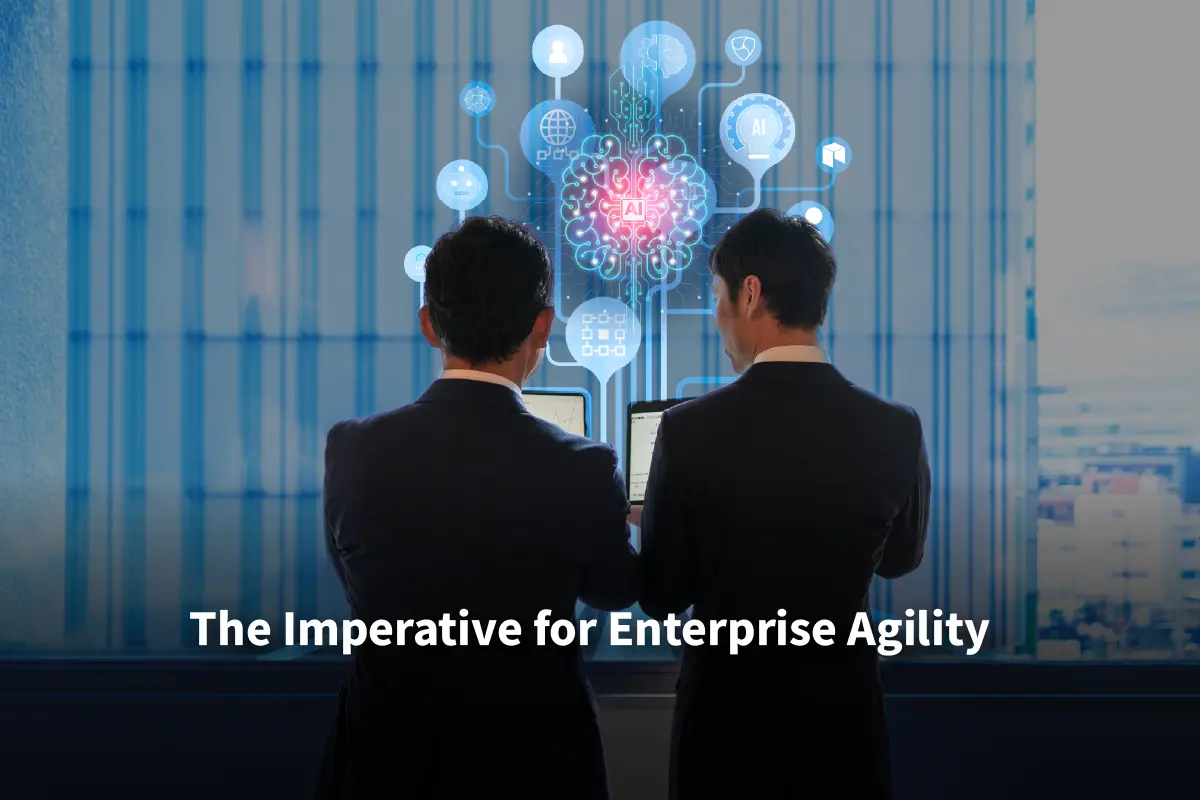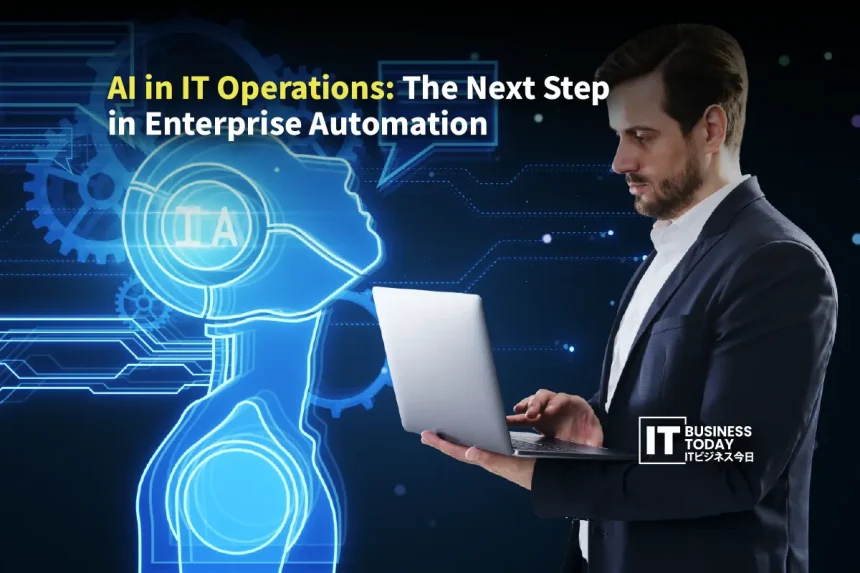IT systems are getting out of control. Hybrid clouds, multiple platforms, microservices, and mountains of logs and metrics make life impossible for IT teams. Alerts come in nonstop. People spend hours trying to figure out what matters. Traditional tools just cannot keep up. Mean Time to Resolution stretches longer and longer. Teams get exhausted chasing problems instead of solving them.
AIOps changes the game. AIOps watches everything happening in the system. It notices patterns humans might miss. It can take some actions on its own. Teams do not have to jump at every alert anymore. Problems get spotted sooner. Fixes happen faster. People can actually focus on solving tricky stuff, coming up with ideas, and keeping the business moving. That is what matters. The rest, the repetitive boring stuff, the alerts, the logs, it gets handled.
This is not a luxury anymore. It is how modern IT survives and thrives in an environment that gets more complex every day.
What is AIOps and How Does It Work?
IT operations teams are drowning in data. Logs, metrics, traces, events, topology maps; they come at you from every angle. Trying to manage this with old-school tools is a joke. That’s why AIOps matters. It doesn’t just watch your systems. It ingests everything, runs it through AI and machine learning, and spots patterns that no human could catch. Then it acts. Sometimes it fixes the problem automatically. Other times it tells the team exactly what to do, fast.
AIOps works on three key fronts. Event correlation cuts through the noise. Thousands of alerts become just a handful of meaningful incidents. Teams finally stop chasing ghosts. Anomaly detection sets a baseline of normal behavior. When something deviates, even slightly, it raises a flag before it becomes a crisis. Root cause analysis traces the issue back to the source quickly. No more wasting hours guessing where things went wrong.
Also Read: Japan’s Sovereign Cloud Strategy: Balancing Innovation with National Security
Google Cloud’s 2025 DORA State of AI-Assisted Software Development report shows this isn’t theory. Teams using AI in their DevOps and IT operations workflows spot problems faster and reduce triage time by significant margins. It changes the game. Instead of reacting to every fire, IT teams can predict, prevent, and focus on work that actually matters.
AIOps turns mountains of data into something humans can act on. It makes IT operations smarter, faster, and less painful. It’s not about replacing people. It’s about giving them the power to do more, solve more, and finally feel in control of their systems instead of drowning in alerts.
Turning IT Operations into a Proactive Engine

IT teams spend too much time putting out fires. Every alert feels urgent, every incident steals hour. AIOps changes that. Automation handles the repetitive stuff. It cuts down the time teams spend investigating problems. Mean time to resolution drops and the endless alert noise gets under control. IBM’s 2025 Unified Operations Management report shows this clearly. Observability gives teams the full picture of what is happening. Automation acts on that picture fast. Teams don’t have to guess.
This isn’t just about speed. It’s about reliability. Predictive maintenance means problems get stopped before they start. Systems stay online. Customers don’t notice outages because there are almost none. When IT performance lines up with service agreements, trust grows. Clients feel it. Teams feel it. The business feels it.
AIOps also saves money and frees people. Predictive models make sure resources scale just right. No wasted cloud spends, no extra servers sitting idle. And staff who were stuck on Level 1 or 2 tasks finally get to do real work like engineering, problem solving, innovation. That’s where the talent matters.
IBM highlights how combining visibility with action is the real game changer. You see the issue; you fix it fast. That simple. Organizations that use this approach work faster, run smoother, and make smarter decisions.
AIOps turns IT from a reactive firefighting team into a proactive engine. Teams spend less time running around, systems run better, and the business stays ahead. It’s efficiency, uptime, and smarter resource use all in one.
Key AIOps Use Cases and Applications
IT teams spend too much time chasing alerts and putting out fires. AIOps flips that script. Take incident management. Tickets do not just sit in a queue. They come enriched with context, severity, and suggested runbooks. Teams know what is urgent, what can wait, and the exact steps to take. According to Azure Monitor 2025, this approach cuts the time spent figuring out incidents. That is hours back every week for your team.
Self-healing workflows go even further. Services can restart automatically. Bad deployments roll back without anyone touching them. Resources scale up or down as soon as anomalies are detected. Problems get solved before anyone notices. No more waiting for someone to spot them. No more stress from after-hours calls.
Performance and capacity optimization also improves. AIOps watches hybrid cloud usage in real time. It finds dark capacity or underused servers and storage. That way you do not pay for resources you do not need. Scaling becomes smarter. Teams can move compute and storage where it is needed most. Budgets stretch farther and over-provisioning stops being a problem.
Security and compliance benefit too. AI spots subtle attack patterns in logs that normal monitoring would miss. It flags unusual user behavior or access. This helps catch breaches faster and keeps systems safer without adding more work for IT staff.
Azure Monitor brings it all together. Machine learning models detect issues, suggest actions, and automate responses. IT teams get clear insights instead of drowning in alerts. They focus on meaningful work and stop reacting to every little problem. AIOps is more than a tool. It makes IT operations smarter, keeps systems running, and gives teams a chance to stay ahead of problems.
Challenges and the Path to Autonomous IT
Adopting AIOps is not always smooth. The first challenge is the data itself. AIOps can only work if the data is clean and complete. Fragmented systems, poor data quality, or silos make it almost useless. Teams end up chasing problems that AI cannot see. Then there is the talent gap. IT teams need people who understand both operations and data science. Those hybrid skills are rare and hard to build. On top of that, there is the human factor. Teams worry about job security. They hesitate to trust systems that make decisions automatically. Overcoming that fear and learning to govern AI-driven actions is a hurdle every organization faces.
The future looks more exciting. Generative AI can explain complex incidents in plain language. Large language models can break down a messy event into something a human can understand in minutes. This speeds up learning and decision-making for IT teams. AWS SageMaker Unified Studio shows how automation can take this further. Teams can automate routine remediation, scale resources, and fix anomalies without constant human intervention. This is the start of autonomous IT.
Agentic AIOps takes it to the next level. Systems continuously observe, analyze, and act. They learn from each event and update over time. Human teams focus on strategic work while AI handles the repetitive, high-volume stuff. The result is faster response, fewer outages, and smarter operations. Moving toward autonomous IT is not optional. It is the way to keep up with complexity, scale efficiently, and stay ahead in the digital era.
The Imperative for Enterprise Agility

AIOps is not something you can skip anymore. IT systems need to run. No excuses. They can’t lag behind. People? They should be fixing real problems. Coming up with ideas. Making stuff better.
The AI handles the boring bits. The stuff nobody wants to touch. And that frees humans. Freed up to actually do something useful. Real work. Not endless clicking and checking alerts. Start small. Pick one project, maybe alert correlation. Show results. Build trust. That is how momentum begins.
The World Bank says strong digital foundations and smart use of AI are what make organizations ready for the future. Get these right, and the business can grow, move faster, and stay ahead of everyone else.







